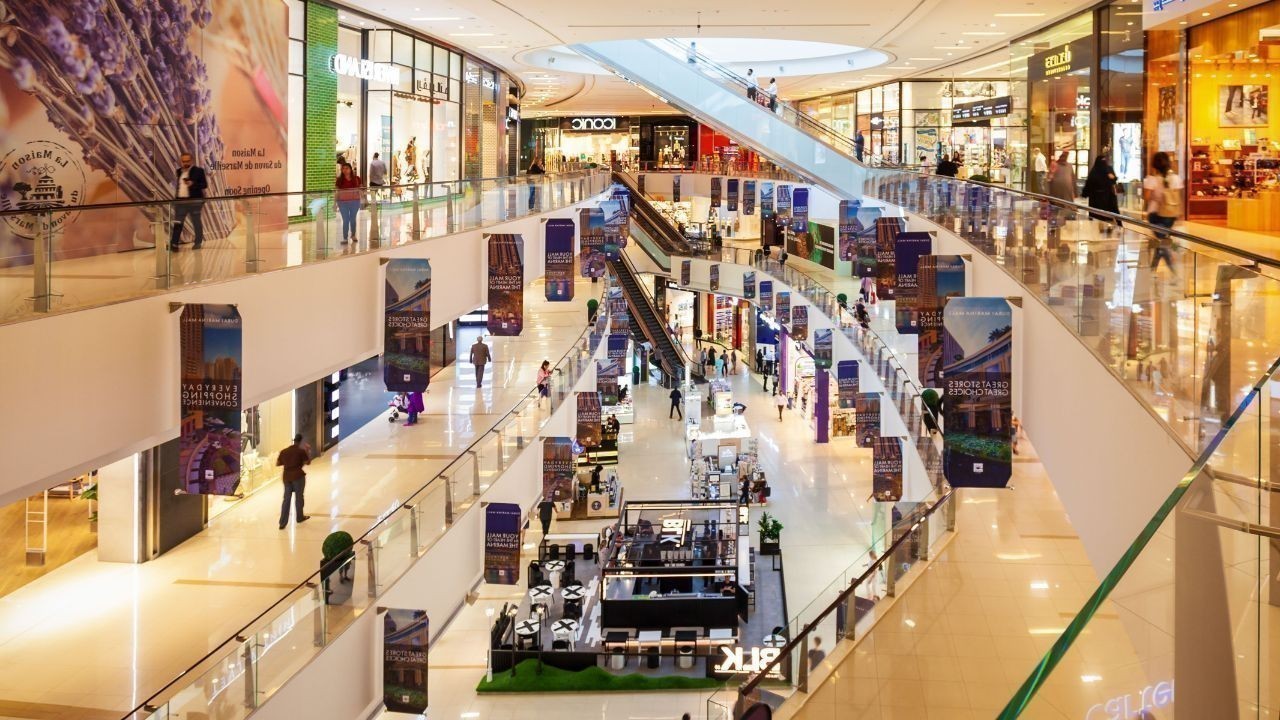
Post by : Anis Karim
Artificial intelligence and robotics have long been partners in technological research, but for decades, most advancements remained confined to laboratories. Experimental robots could navigate controlled environments, perform repetitive tasks, or interact in limited ways with humans. Now, a convergence of AI, sensors, and advanced hardware is enabling autonomous systems to leave the lab and operate in dynamic, unpredictable real-world settings.
Autonomous robots are no longer simple tools—they are systems capable of perception, reasoning, and action. With AI algorithms capable of learning from data and experience, robots can now understand their environment, make complex decisions, and adapt to unexpected situations. This transition from controlled settings to real-world deployment represents one of the most significant milestones in robotics history.
Several technological developments have paved the way for autonomous robots in the field:
Advanced AI Algorithms: Modern deep learning, reinforcement learning, and computer vision algorithms enable robots to recognize objects, predict human behavior, and make decisions in real time.
Sensor Integration: Lidar, radar, infrared, and high-resolution cameras allow robots to perceive their surroundings in three dimensions, detect obstacles, and navigate safely.
Edge Computing: Processing data locally allows robots to make split-second decisions without relying on remote servers, essential for time-critical operations.
Battery and Energy Management: Efficient power systems and energy-dense batteries extend operational duration, making field deployment feasible for longer periods.
Together, these advances enable robots to handle tasks that previously required human oversight, while reducing errors and improving productivity.
Industrial automation has been the first frontier for autonomous robotics. AI-driven robots now manage complex assembly lines, coordinate with other machines, and adjust workflows based on real-time data. In logistics, autonomous robots streamline warehouse operations, transporting goods efficiently, monitoring inventory, and optimizing storage patterns.
Unlike traditional robotic arms that perform repetitive tasks, AI-powered systems learn continuously. They can recognize damaged items, adapt to varying product sizes, and navigate changing warehouse layouts. This flexibility reduces downtime, increases throughput, and minimizes operational costs, marking a clear advantage over earlier automation approaches.
Healthcare is another field experiencing significant autonomous robotic deployment. Surgical robots powered by AI assist surgeons with precision, reducing risk and improving patient outcomes. Beyond operating rooms, robots handle repetitive and time-consuming tasks such as medication delivery, sanitation, and patient monitoring.
For elder care and rehabilitation, autonomous robots provide mobility support, remind patients about medication, and monitor vital signs. By combining robotics with AI-driven decision-making, healthcare facilities can deliver safer, more efficient, and personalized care, particularly in environments where staff shortages are common.
Farming has historically been labor-intensive, but autonomous robots are transforming agriculture through precision farming. AI-powered machines can plant seeds, monitor crop health, detect pests, and optimize irrigation. Drones equipped with computer vision systems can scan vast fields, providing real-time data for yield prediction and disease detection.
These systems not only increase productivity but also reduce resource waste. By making farming more data-driven, autonomous robots help ensure sustainability, enabling farmers to make informed decisions with minimal manual labor.
Autonomous ground and aerial vehicles are a visible application of robotics and AI outside laboratories. Self-driving cars, delivery drones, and autonomous trucks rely on AI algorithms to navigate, detect obstacles, and comply with traffic rules.
While regulatory and safety challenges remain, these vehicles demonstrate how robotics can safely operate in complex environments. Integration with smart city infrastructure and AI-driven traffic systems further enhances efficiency and reduces congestion, showcasing the broader potential of autonomous mobility solutions.
Despite significant progress, field deployment of autonomous robots faces several challenges:
Environmental Complexity: Robots must handle unpredictable weather, uneven terrain, and dynamic human interactions.
Safety and Reliability: Ensuring that AI systems make safe decisions in real time is critical, especially in high-stakes environments.
Data and Learning Requirements: Autonomous systems rely on extensive datasets to learn effectively, and insufficient or biased data can lead to errors.
Ethical and Social Concerns: Privacy, job displacement, and accountability remain pressing issues as robots become more autonomous in public and private spaces.
Addressing these challenges requires collaboration between engineers, policymakers, and ethicists to create safe and socially responsible autonomous systems.
The next decade promises exponential growth in AI-powered autonomous systems. Advancements in machine learning, robotics hardware, and human-robot interaction will enable robots to undertake more complex and critical tasks across industries. Collaborative robots—or “cobots”—will work alongside humans, complementing skills rather than replacing them.
Autonomous systems will also become more adaptive. Continuous learning in real-world environments will allow robots to refine their performance over time, making them increasingly reliable and versatile. Furthermore, integrating cloud computing and edge AI will enable fleets of robots to communicate and share knowledge, accelerating collective intelligence and efficiency.
As robots move from labs to fields, society must grapple with their broader implications:
Workforce Transformation: Automation will shift job requirements, emphasizing skills in robotics management, AI oversight, and maintenance rather than manual labor.
Regulatory Frameworks: Governments will need to develop safety, liability, and data governance regulations for autonomous systems operating in public spaces.
Ethical Standards: Transparent algorithms and fairness in decision-making will become critical to maintain public trust in AI-powered robotics.
Accessibility and Inclusion: Ensuring equitable access to robotic technologies can reduce disparities between large enterprises and smaller operations.
Understanding these dimensions is essential to ensure that autonomous robots benefit society while minimizing risks and unintended consequences.
Autonomous robotics is no longer an experimental concept confined to labs. Powered by AI, these systems are entering manufacturing floors, hospitals, farms, warehouses, and public spaces, reshaping industries and daily life. The integration of perception, intelligence, and action allows robots to adapt, learn, and operate safely in complex environments.
While challenges remain—ranging from safety and ethical concerns to technical limitations—the momentum is undeniable. The era of field-deployed autonomous robots has arrived, signaling a future where machines and humans collaborate more closely, efficiently, and intelligently than ever before.
This article is intended for informational purposes only. It summarizes current trends and applications in autonomous robotics and AI and does not constitute professional, legal, or technical advice. Readers are encouraged to consult experts or primary research for specific implementations.

Dubai Shopping Festival 2025-26: Biggest Sale in Middle East
DSF 2025-26 returns with 38 days of up to 75% off, raffles, and exclusive deals across fashion, elec

MÄNN Skincare Wins Best Male Grooming Product 2025
MÄNN Skincare, born in Dubai and crafted in Europe, wins Best Male Grooming Product 2025, redefining

Pounders Launches Bold New Menu in Dubai
Dubai’s Pounders unveils a revamped menu featuring Wagyu burgers, spicy calamari, and gourmet twists

Kaspersky’s Complete Guide to Erasing Your Digital Footprint
Kaspersky outlines practical steps to manage your digital footprint, remove old accounts, monitor da

Dubai Real Estate Hits Record AED559B in 2025 Sales
Dubai’s property market sets a new record in 2025 with AED559.4B in sales, led by apartments, land,

Stay Fit in Dubai 7 Fun Outdoor Workouts Without a Gym
Explore 7 fun ways to stay fit in Dubai from beach runs to desert hikes and skyline yoga No gym nee

From Mall to Metaverse: How UAE Retail Is Going Virtual
Discover how the UAE is transforming its retail industry through the Metaverse — blending technology

Stay Fit in Dubai 7 Fun Outdoor Workouts Without a Gym
Explore 7 fun ways to stay fit in Dubai from beach runs to desert hikes and skyline yoga No gym nee

Beyond Biryani: Mastering Portion Control in Dubai’s Melting Pot of Cuisines
Discover how to enjoy Dubai’s diverse cuisines wisely Learn simple portion control tips to stay heal

Fabien Marchand — The Infinite Brushstroke of Freedom
French artist Fabien Marchand explores freedom, color, and emotion through his evolving art — bridgi

Dubai’s Healthy Food Revolution 5 Global Wellness Trends Transforming the City
Discover how Dubai is embracing a global wellness wave with plant based diets organic food and smart

Start Your Day with Chia Seeds for Stronger Healthier Hair Naturally
Discover how morning chia seeds boost hair growth add shine and strengthen roots naturally with easy

The Power of SPF Why Daily Sunscreen Use Protects Your Skin from Damage
Discover why daily sunscreen matters Learn SPF basics how to choose the right type and protect your

Simple Hydration Hacks to Help You Drink More Water Every Day
Stay refreshed with easy hydration hacks Learn fun natural ways to drink more water daily boost ener

The Healthy Side of Dubai Exploring the Nutritious Essence of Emirati Cuisine
Explore the healthy side of Dubai through Emirati cuisine Discover natural ingredients balanced flav